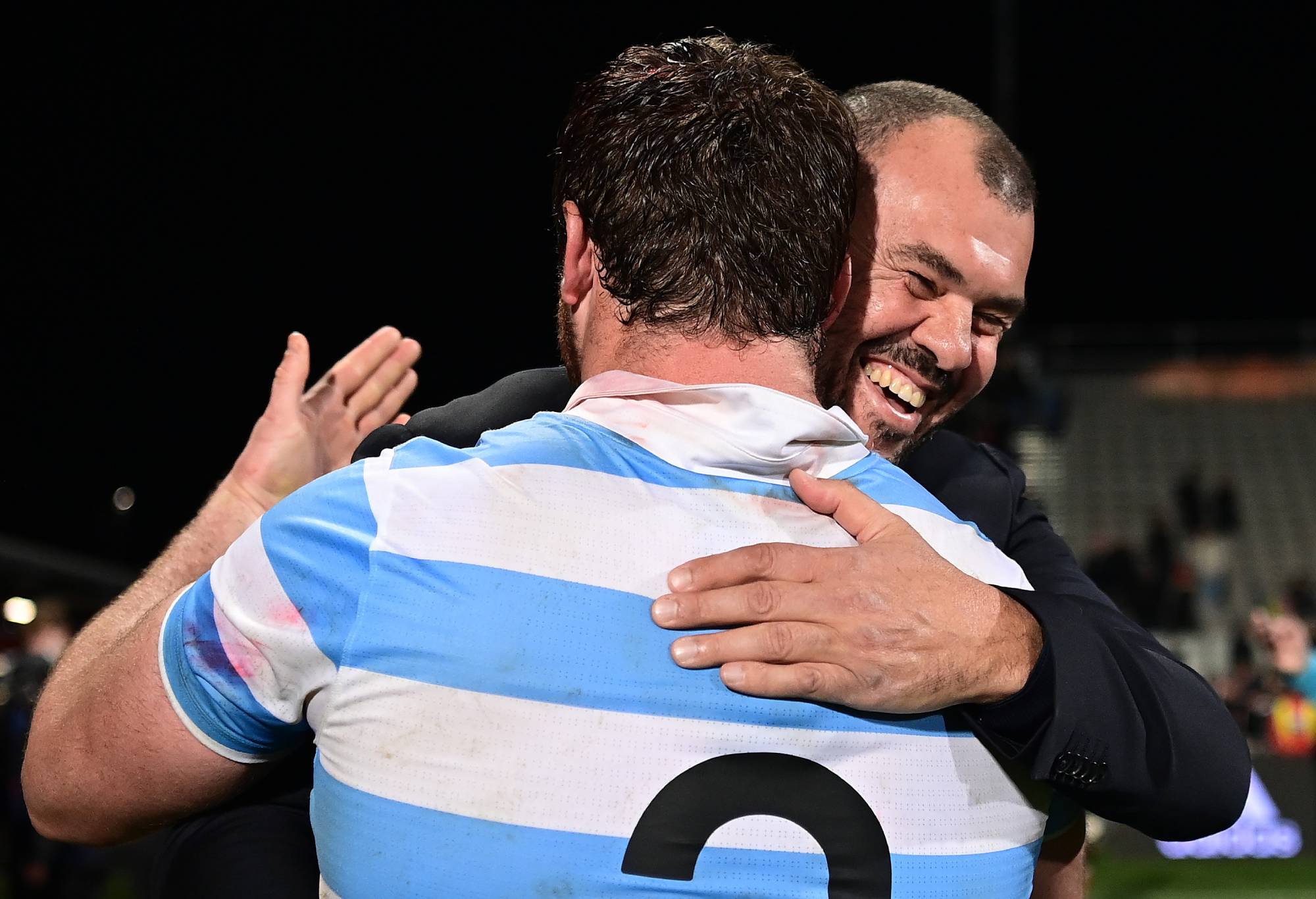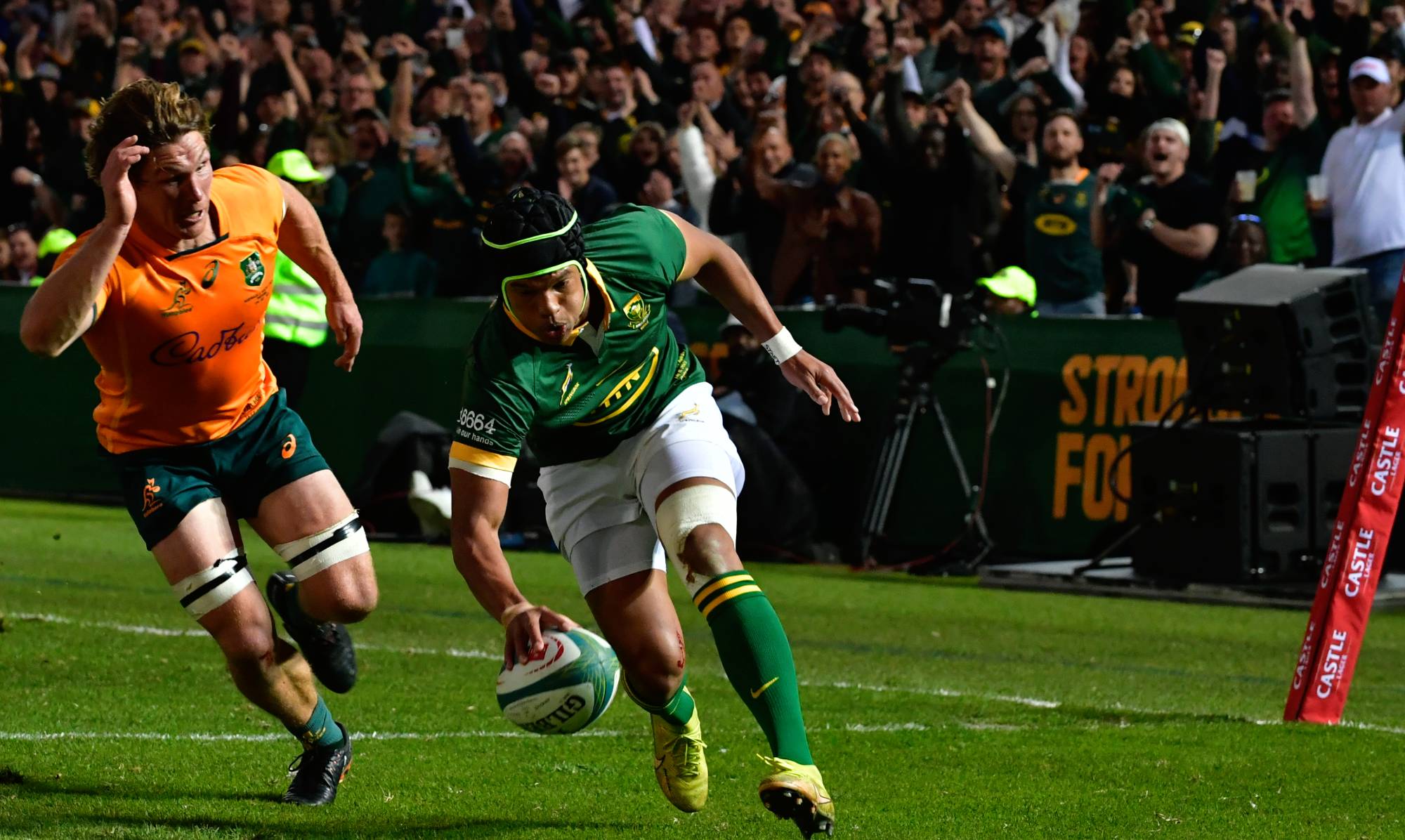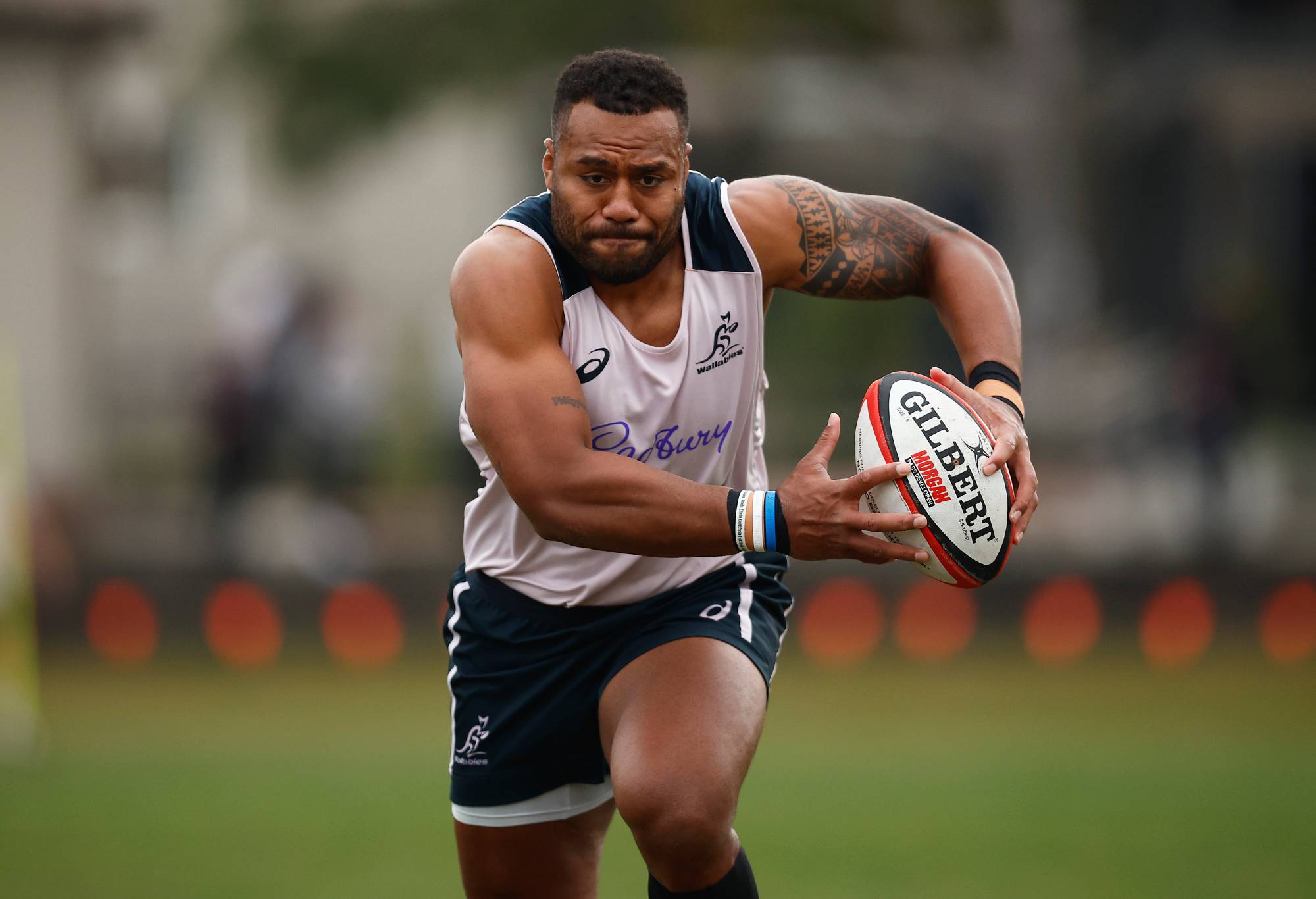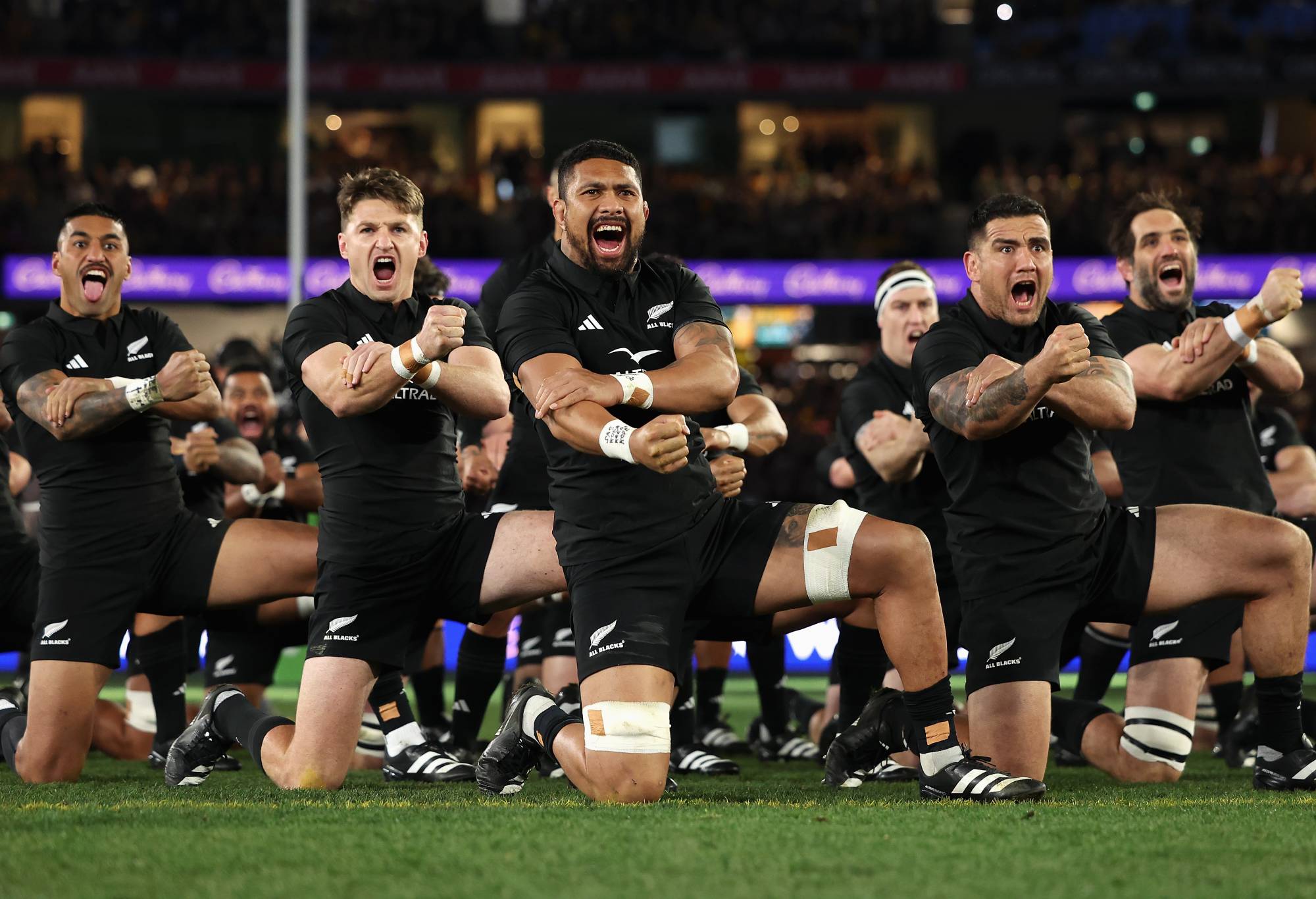International rugby in the southern hemisphere is now finished for 2023, with all our teams completing the first stage of their Rugby World Cup preparations.
They’ll all head to Europe in the coming weeks for some warm-up games before the serious stuff begins with the opening pool games in early September.
So, one month out, where are our teams up to now?
What do we know now that we didn’t before? And what still needs to be worked out before they get on a plane bound for France?
The Panel is going to hit pause before things really start ramping up again in a few weeks’ time, but before we do, there’s plenty to discuss and still plenty of curly questions that need answers before bags are packed and passports are stamped.
Question 1: What have you learned about your team over The Rugby Championship (and the bonus game)?
Nobes
The first thing that comes to mind is that Argentina went from minor to major and several of the doubts regarding the players to take to France were defined.
I don’t take into consideration the last game because many of the Springboks players were fresh and had to prove things to be considered in the list of 33. Los Pumas, for their part, went out to practice certain things regardless of the result and in addition, things were kept so as not to show them.

(Photo by Hannah Peters/Getty Images
The scrum was quite solid against one of the best scrums in the world, while in the attacking lineouts Los Pumas did not want to show play and only launched to the forward position.
Of the 33 selected players there are 14 rookies who are at a very good level to mix with Tomás Lavanini, Agustin Creevy, Pablo Matera and several more who already have extensive experience. What it seems to me is that Los Pumas today is a team that nobody prefers to face for different reasons, and that was not the case in previous World Cups.
In today’s modern game of rugby, both the cards or subsequent summons as well as the different arbitration criteria and other situations can define the outcome of matches.
I have great expectations about this World Cup where everything seems to be more even and where there are many more games where it is more difficult to predict a winner.
Brett
Wallabies fans have learned a lot through The Rugby Championship and Bledisloe Tests, including that Eddie Jones’ plan from the outset – judging by his insistence that everything is still on plan – was to lose the first four games.
We’ve also learned that not only is possession rugby not dead, but it’s literally the lifeblood of this playing group.
Hopefully Jones has learned this too. Hopefully he’s realised now, based on a good chunk of evidence in those four games, that his defensive plans are not good enough to be giving away sixty and seventy percent of possession. He should have seen now that the minute he sends the team out with that plan, or sends out the message to switch to low possession rugby and kick for the sake of not having the ball, that they will lose games.
There is no point having damaging ball runners if they’re too buggered from making twenty tackles in a half of rugby. If he’s still wondering where the other half of Tom Hooper’s body is, check the western end of the Melbourne Cricket Ground, where he spent all the first half tackling a fortnight ago.
Hey presto, they hold onto the ball in Dunedin, and they’re a side who can ask questions in attack, and can pose problems for opposition defences. Possession rugby, dare I suggest it to be the Australian way of playing, is alive and well.
Also, we’ve learned that all tighthead props will be traveling in First Class, and stored in tepid restorative gel baths in carbon fibre hermetic chambers inbetween games.
Digger
I am not sure I can say I have learned more but I can certainly say I feel a lot more confident about New Zealand’s chances for the upcoming World Cup after this last month of matches.
The difference in the side from the aftermath of the Irish series to now is quite staggering but at the same time, I always believed it possible.
A more direct and nuanced strategy has certainly provided encouragement, while the big issues seen in the forwards a year or so ago now seem well on the way to being addressed.
Challenges await along with the pressure of the occasion and while I still cannot see the All Blacks as favourites personally, their form indicates they can give this tournament a decent shake.

(Photo by Joe Allison/Getty Images)
Geoff
The big takeaway with regard to New Zealand is that the All Blacks have benefitted from greater continuity in selection. That’s not something we’ve seen much of throughout the Hansen and Foster eras, with a focus on squad depth and interchangeability.
But as was evident in the three Rugby Championship matches, players benefit from knowing they are backed and will get more regular opportunities, and team cohesion improves as a result.
And surprise, surprise, when the All Blacks rung the changes for the Dunedin Test (as they should have), things suddenly looked very different.
For Australia, we learned how important depth is.
While the improvement in the Wallabies is obvious and welcome, we didn’t need to scratch too far beneath Alan Ala’alatoa to find a fairly barren wasteland.
Make sure of your place in the stands to see the British and Irish Lions in 2025. Tour packages on sale now at Wallabies Travel
Harry
Going into The Rugby Championship, I would have said the Springboks can put a 2023 team on the fields of France with more 2019 finalists (and 2015 semi-finalists) than any other team..
That redoubtable Three-Cup spine (Malherbe-Etzebeth-Lood-PSDT-Pollard-de Allende-le Roux) buttressed by Two-Cuppers (Marx-Kitshoff-RG-Faf-Kolisi-Kolbe-Mapimpi-Willemse) will know what to and how to do it come crunch time.
How hard to push when you have nothing left. The core. Nothing new about that. But now, Lood de Jager, Handre Pollard and Lukhanyo Am are still on standby, in a nine-man group, rehabbing in the U.K., in a race to be ready by mid-September.
So it is the new generation (Manie Libbok, Canan Moodie, Evan Roos, Jasper Wiese, Kurt-Lee Arendse, Jean Kleyn) who have caught my eye and are likely creating tough nights of deliberation for the Bok coaches.

(Photo by Sydney Seshibedi/Gallo Images/Getty Images)
To Grant Nisbett’s great relief, Makazole Mapimpi was a lucky man this week, but Moodie was easier to say anyway.
I have learned nobody outside the Three-Cuppers is safe from the axe.
Question 2: Which player who’s probably France-bound have you not seen enough of over the last six weeks?
Nobes
On the list there are several players I would have liked to see more of, starting with Tomás Cubelli who comes from a long inactivity due to injuries.
Nicolas Sanchez hasn’t been getting minutes either and I really don’t know how he is, something of the utmost importance since Los Pumas decided to take only two flyhalves, although JC Mallia played a lot of games in that position in his Toulouse team this last season.
Young Martin Bogado, a Highlanders player, who hasn’t had much training time with his teammates who play entirely in the Northern Hemisphere, and finally Rodrigo Isgro also played only one game.
Brett
We definitely have not seen enough of Pete Samu, and my very strong suspicion is that we’ll only be seeing him in case of emergency over the next two months. Even if he gets a ticket via Australia A or the BaaBaas, he probably doesn’t fit the true spirit of the “probably France-bound” part of the question.
Which means we probably haven’t seen enough of someone like Samu Kerevi.
And yes, he’s coming back from long term injury, and has now even picked up a hand injury himself, meaning we probably won’t see much of him on arrival in France, either.

(Photo by Daniel Pockett/Getty Images)
But what I really mean is that despite playing 29, 80, 80, and 75 minutes over the four games, he remains a long way from what we all know he’s capable of. His carrying numbers through TRC were reasonable, but his meterage was tiny, averaging somewhere around two metres per carry. For such a damaging player, he just hasn’t caused a lot of damage yet.
In fact, we didn’t see a lot out of the Wallabies midfield at all – Jordan Petaia over about a game and a half at 13 aside. There are numerous reasons for that, but it’s still tough to have a lot of confidence when a major cog in the attacking machine is still yet to turn.
Digger
It’s an easy one: David Havilli, the one player who did not appear in any of the tests so far.
Now that is not to suggest he does not have the class or ability to be there, but I do feel for Dallas McLeod, who I didn’t think did too much wrong last Saturday but I guess the greater experience won out with a coaches pick.
We all have our personal preferences when it comes to individuals, but the team is named now and I won’t disappear down that rabbit hole.
The squad named is pretty strong and for the most part, in very good form.

(Photo by Cameron Spencer/Getty Images)
Geoff
Obviously, the All Black players returning from injury fall into this category.
To single one out, Emoni Narawa showed enough promise in Mendoza to suggest that he might have a key role to play at some stage of the World Cup, if either Will Jordan or Mark Telea strike bad luck with injury.
Ryan Lonergan stands out for the Wallabies, employed so far as tackle bag fodder and dinner-time panellist (which he made a fine fist of at a function I attended in Melbourne).
No argument with him having been third cab off the rank so far but even so, it would have been nice to see him get a run during one of the four matches.
Harry
Rehabbing Jaden Hendrickse and Handre Pollard are the preferred starting 9-10 combination (with either Damian Willemse or Manie Libbok or both on the bench, depending on 6-2 or 5-3 vagaries) and have yet to play at all.
This is both worrying (for Boks) in terms of cohesion and worrying for foes (how much better would they have been just with this one switch)?
Pollard is said to be taking part in full drills next week but will need to play in one match before they do the switch (one flyhalf in, one of the four scrumhalves out).
OVER TO YOU
What have you learned about your team over the last month of southern hemisphere rugby? And which player from your team have you not seen enough of ahead of the World Cup?

































































































